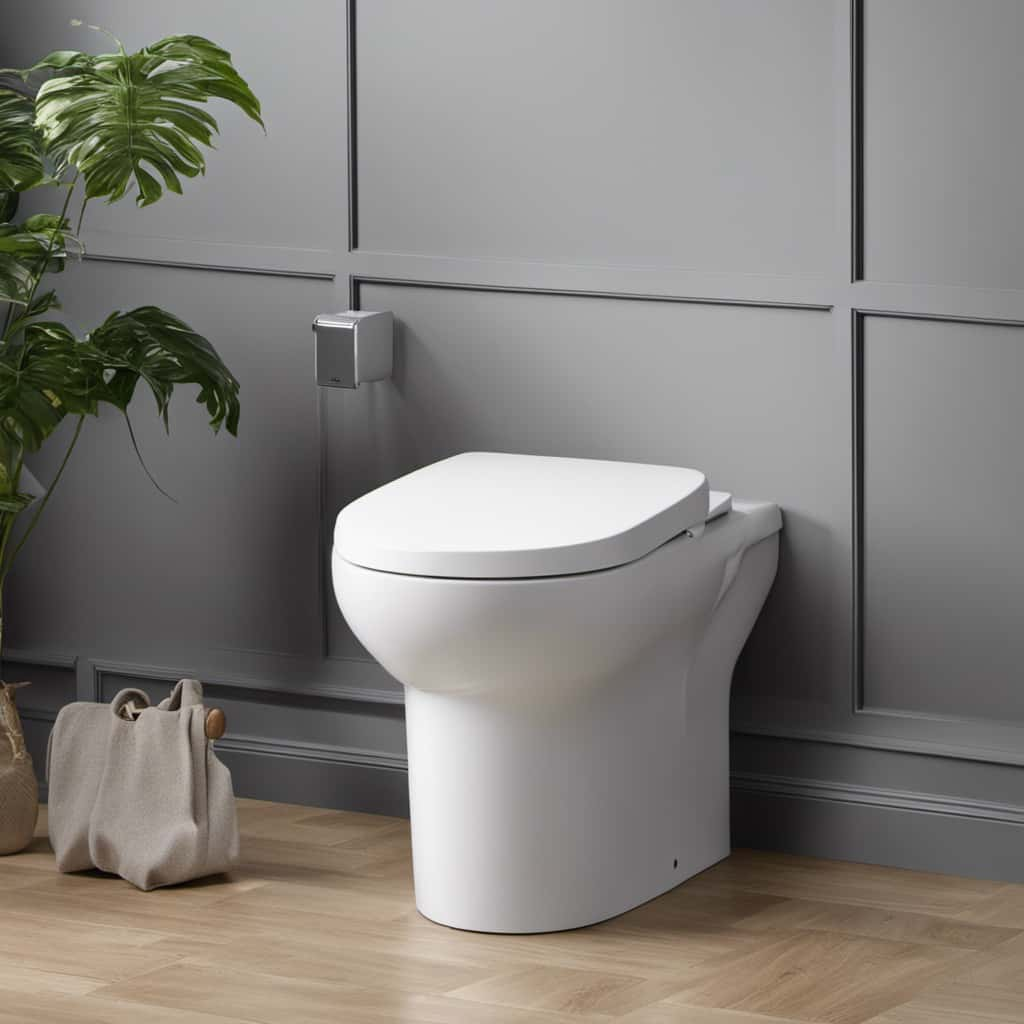Have you ever wondered if it’s possible to simply replace the toilet tank on your toilet? Well, we’re here to tell you that it can be done!
In this article, we will guide you through the process of replacing just the toilet tank, step by step. We’ll also provide you with some troubleshooting tips and advice on how to maintain your new toilet tank.
So, let’s dive in and master the art of replacing a toilet tank!
Key Takeaways
- Replacing just the toilet tank is a cost-effective solution for updating the bathroom.
- It gives the toilet a fresh and modern look.
- Replacing the tank reduces environmental impact by minimizing waste.
- Replacing the tank saves money by avoiding the need to replace the entire unit.
Benefits of Replacing Just the Toilet Tank
Replacing just the toilet tank can provide several benefits when it comes to updating your bathroom. It’s a cost-effective solution that allows you to give your toilet a fresh look without having to replace the entire unit. By simply swapping out the old tank for a new one, you can achieve a modern and stylish appearance.

Not only does this save you money, but it also reduces the environmental impact. Instead of disposing of the entire toilet, you’re only replacing a single component. This means less waste going into landfills and a smaller carbon footprint.
Additionally, replacing just the toilet tank is a relatively straightforward process that can be done by most homeowners, saving you the hassle and expense of hiring a professional.
Tools and Materials Needed for the Replacement
To complete the replacement of just the toilet tank, we’ll need a few tools and materials:
- Adjustable wrench: This will be essential for loosening and tightening the nuts and bolts that connect the tank to the bowl.
- Screwdriver: You’ll need this to remove any screws or fasteners holding the tank in place.
- Towels or rags: These will come in handy for catching any water that may spill during the replacement process.
- Replacement tank: Choose a tank that’s compatible with your existing toilet bowl and meets your desired specifications.
- Gaskets and seals: Replace these to ensure a tight and leak-free connection between the tank and the bowl.
- Silicone sealant: This will provide an extra layer of protection against leaks.
- Optional: Consider cost-effective alternatives and eco-friendly options, such as dual-flush or low-flow toilets, to save water and reduce your environmental impact.
Step-By-Step Guide to Replacing the Toilet Tank
Now let’s move on to the step-by-step process of swapping out the toilet tank, starting with disconnecting the existing tank from the bowl.

- Start by shutting off the water supply to the toilet using the shut-off valve located behind the toilet. Flush the toilet to drain the water from the tank.
- Disconnect the water supply line from the bottom of the tank using an adjustable wrench. Be prepared for some water to escape, so have a towel or bucket handy.
- Remove the nuts and bolts that secure the tank to the bowl. These are usually located on the inside of the tank. Use a wrench to loosen and remove them.
- Carefully lift the tank off the bowl and place it aside.
Potential challenges during toilet tank replacement may include rusty or corroded bolts, difficulty in removing the tank due to old sealant, or identifying the correct replacement tank for your specific toilet model.
Common Problems and Troubleshooting Tips
After disconnecting the existing tank from the bowl, we may encounter common problems and troubleshooting tips when replacing the toilet tank. Here are some issues you might face and how to solve them:
- Toilet Tank Leaks:
- Check the tank bolts and washers for any signs of damage or wear. Replace them if necessary.
- Inspect the flush valve and flapper for leaks or cracks. Replace them if needed.
- Ensure that the tank is properly aligned with the bowl to prevent any leaks.
- Fixing a Running Toilet:
- Adjust the water level in the tank by adjusting the fill valve. This can help prevent the toilet from continuously running.
- Inspect the flapper for any debris or mineral buildup. Clean or replace it if necessary.
- Check the float arm and adjust it to ensure that it’s properly controlling the water level in the tank.
Tips for Maintaining Your New Toilet Tank
After addressing common problems and troubleshooting tips when replacing the toilet tank, we can now focus on maintaining our new toilet tank.
Proper maintenance is crucial to ensure the longevity and functionality of the tank. Regular cleaning is essential to prevent the buildup of grime and bacteria. Use a mild detergent or vinegar solution to clean the inside and outside of the tank, making sure to scrub all surfaces thoroughly.

Additionally, it’s important to regularly inspect the tank for any signs of leaks. Check the water supply line and the connection between the tank and the bowl for any drips or puddles. If you notice any leaks, promptly address them to prevent further damage.
Frequently Asked Questions
How Long Does It Typically Take to Replace a Toilet Tank?
Replacing a toilet tank typically takes around 1-2 hours. To choose the right toilet tank, consider factors like size, water efficiency, and compatibility. Avoid common mistakes such as mismatching parts or improper installation.
Can I Replace the Toilet Tank Myself or Should I Hire a Professional?
We can replace the toilet tank without any prior plumbing experience, but hiring a professional has pros and cons. It’s cost-effective to DIY, but a professional ensures proper installation and avoids potential mistakes.
Is It Necessary to Turn off the Water Supply Before Replacing the Toilet Tank?
Yes, it is necessary to turn off the water supply before replacing the toilet tank. This ensures safety and prevents any potential water damage. It is not safe to replace the tank without prior plumbing experience.

What Should I Do if I Encounter a Leak After Replacing the Toilet Tank?
If encountering a leak after replacing the toilet tank, there are a few steps to take. First, turn off the water supply. Next, inspect the connections for any loose or damaged parts. Lastly, repair the leak by tightening or replacing the necessary components.
Are There Any Specific Maintenance Tasks That Should Be Done Regularly to Keep the New Toilet Tank in Good Condition?
Regular maintenance is essential for keeping the new toilet tank in good condition. Common issues like leaks and clogs can be prevented with tasks such as inspecting for cracks, cleaning the tank, and checking the flush mechanism.
Conclusion
In conclusion, replacing just the toilet tank is a simple and cost-effective way to upgrade your bathroom. With the right tools and materials, you can easily install a new tank and enjoy the benefits of improved water efficiency and functionality.
Just like a fresh coat of paint can transform a room, replacing the toilet tank can give your bathroom a refreshing makeover. So why wait? Start your tank replacement project today and experience the difference it can make.











